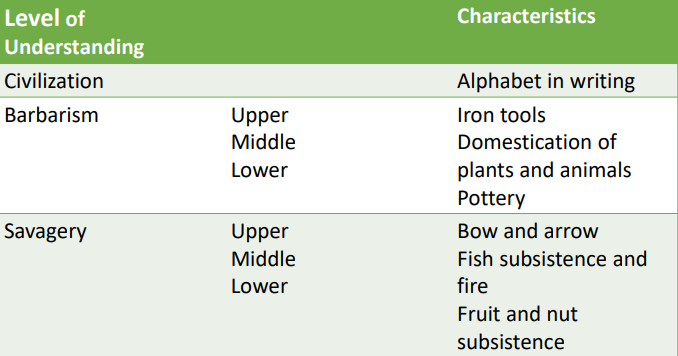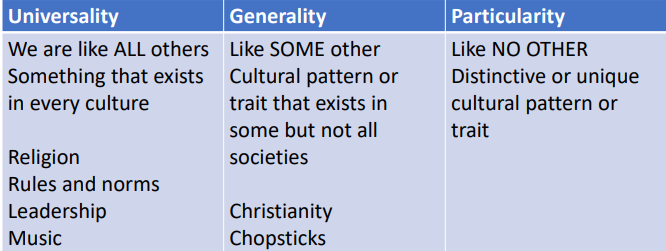Bio-cultural, Social, and Political Changes
1/34
There's no tags or description
Looks like no tags are added yet.
Name | Mastery | Learn | Test | Matching | Spaced |
|---|
No study sessions yet.
35 Terms

It is not the strongest of the species that survives, not the most intelligent that survives. It is the one that is the most adaptable to change.
Charles Darwin
“Survival of the fittest”
Herbert Spencer
- “Societies will experience stages of development and that those that can survive are the strongest while the weak will perish…”
“that all cultures passed through various stages of development, although some are “stuck in a stage”
Henry Lewis Morgan
SAHELANTHROPUS TCHADENSIS
(6-7 million years ago)
Nickname: Toumai (Hope for Life)
Home: West-Central Africa (Chad)
First known hominin or direct human ancestor that walks upright (Bipedal)
ORRORIN TUGENENSIS
(5.8-6.2 million years ago)
Nickname: Millenium Man
Home: Tugen Hills, Kenya
Physical make-up is more ape-like like only that they can walk upright
AUSTRALOPITHECUS AFARENSIS “LUCY”
(4.4-4 million years ago)
Home: Hadar, Ethiopia
Ave. Brain size: 430-485 cc.
Diet: Plant-based and occasionally some insect or lizard.
Her species is one of the longest-lived early human ancestor that walk upright.
HOMO HABILIS
(1.4-2.4 million years ago)
Nickname: Handy Man
Home: Eastern & Southern Africa
Ave. Brain size: 680 cc
Diet: Wide rage of fruits, plants, and animals
Hypothesized to be the first Homo to use stone tools (Oldowan Stone Tool) based on animal fossils found to be butchered by them.
HOMO ERECTUS
(1.89 million years-50,000 years ago)
Nicknames: Peking Man (China), Java Man (Indonesia)
Home: Northern, Eastern, and Southern Africa; Western Asia (Dmanisi, Republic of Georgia); East Asia (China and Indonesia)
Ave. Brain size: 1050cc
Diet: Tubers and meat
First homo to leave Africa.
First to use and control fire.
Created hand-axes, which is called Acheulian stone tool technology.
Rely on culture to survive, and might be capable of language.
HOMO HEIDELBERGENSIS
(700,000-200,000 years ago)
Places lived:
Ave. Brain size: 1,200 cc
Diet: Mostly rely on meat
Capable of symbolic thinking based on an excavated mass burial containing grave offering in Spain.
Common ancestor of modern human and Neanderthals.
First to create shelters
HOMO SAPIEN NEANDERTHALENSIS
(400,000-30,000 years ago)
Places lived: Europe-Southwestern Asia
Ave. Brain size: 1,450 cc
Diet: Heavy on meat and some plants occasionally
Rely on hunting to survive
Uses fire and clothes
Exhibits symbolic behavior
Both male and female are muscular and robust
HOMO SAPIENS SAPIENS
(200,000 - Present)
Home: Anywhere-worldwide
Ave. Brain size: 1,400 cc
Diet: Varied from plants to meat rich in sugar and high in protein
Last human standing
Highly sophisticated culture
Developed agriculture in the Neolithic Period
FEATURES OF HOMO SAPIEN SAPIENS
Advantage of big brains
Store many decades worth of information;
Collect and process information, then deliver output, in split seconds;
Solve problems and create abstract ideas and images.
Manage complex social relationships.
Useful in the game of survival.
Disadvantage of big brains
Big brain is costly. The brain is 2 percent of body weight but uses 20% of oxygen supply and gets 20% blood flow.
Large brains = large heads, making childbirth more difficult and painful
What brought the shift in people’s way of life?
Change in global temperature
Due to the unpredictable supply of food
Consequences of Domestication
Increase in food = increase in human population.
Society became more structured
Specialization emerged
Technological advancement
Diseases from animals were passed on to humans.
IMPORTANT INNOVATION DURING NEOLITHIC
Improved tools - polished stones up to the use of metals such as copper.
Irrigation improved food production.
Pottery was invented → storage
The concept of home emerged
Types of Societies
Hunting/foraging and Gathering
Pastoral (pastoralism)
Horticultural
Agricultural
Industrial
Post-industrial
HORTICULTURAL
Domestication of plants – the growing of edible plants and crops
Created permanent settlements or villages that could have a thousand or more people living in it is sustainable.
AGRICULTURAL
A more efficient and intensive manner of producing food using sophisticated knowledge and technology.
They are found in areas with large sources of fresh water. These societies built irrigation systems to bring freshwater to farther parts of the land.
Due to increase in population, a centralized government was needed to ensure order.
INDUSTRIAL
Machines replaced human labor at certain stages of production.
Industrial societies convert raw materials produced in agricultural societies into finished products using machines and in much larger quantities.
POST-INDUSTRIAL
The major economic activity centers on providing services and facilitating the exchange and the use of advance communication technologies
SURPLUS
Goods that are being produced are in excess than what they consume
Resulting to people converging into places with stable supply
Example: Manila = opportunities = congested
How does culture change?
DIFFUSION
ASSIMILATION
ACCULTURATION
CULTURAL LOSS
CULTURE LAG
CULTURAL DIVERSITY
ETHNOCENTIC
XENOCENTRISM
CULTURAL RELATIVISM

LEVELS OF CULTURE
INTERNATIONAL
Extends beyond national boundaries
NATIONAL
Shared by the citizens of the same country
SUBCULTURE
Different cultural traditions associated with subgroups in the same complex
COUNTERCULTURE
group whose values, beliefs, norms, and related behaviors place its members in opposition to the broader culture.
How does politics fit in this change in society?
Policy-making and Laws – Governments create laws and policies that can reshape society, such as education reforms, healthcare programs, or environmental regulations.
Representation and Power Distribution – Politics determines who has power and whose voices are heard, which influences social justice, equality, and opportunities.
Conflict Resolution and Stability – Through political processes, societies can address conflicts, negotiate interests, and maintain peace, which allows progress and development to happen.
DIFFUSION
It is the spread of cultural practices, beliefs, or items from one culture to another.
ASSIMILATION
It is a process where a minority group or culture adopts the values, behaviors, and beliefs of a society's majority group. This can happen fully or partially.
ACCULTURATION
It occurs when the minority culture changes but is still able to retain unique cultural markers of its own.
CULTURAL LOSS
An inevitable result of old cultural patterns are replaced by new ones.
CULTURE LAG
Notion that nonmaterial culture takes time to catch up with material culture.
Advancement in material culture creates moral and ethical issues.
CULTURAL DIVERSITY
existence of a variety of cultural groups within a society.
ETHNOCENTIC
belief that one’s ethnic group is superior than the other
XENOCENTRISM
belief that another culture is superior than one’s own, and the preference for the cultural practices of that other culture.
CULTURAL RELATIVISM
idea that there is no universal standard to measure cultures by, and that cultural values and beliefs should be understood within their cultural context.
emphasizes the importance of cultural differences and the relative nature of truth.